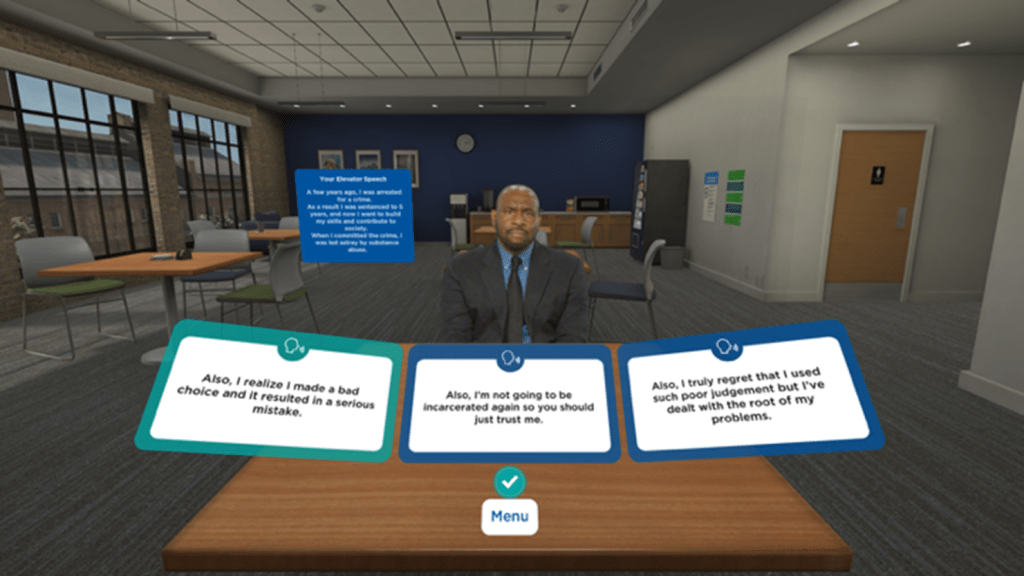Many of us are hearing about the Metaverse, and employers and educators may be wondering how emerging technologies like virtual reality (VR) can enhance learning and workforce development. At the Next Level Lab, we recognize that immersive technologies have a range of affordances for learning skills and dispositions, but there remains little evidence on their impact in real-life learning environments. To better understand how these technologies can be used for workforce development and to support vulnerable jobseekers, we partnered with Goodwill Industries International to study the VR program Project OVERCOME, developed by Accenture.
Project OVERCOME is a VR simulation that enables jobseekers who have been impacted by the criminal justice system to practice interviewing, discuss their past, and learn about others who have been in their situation. In 2022, more than a dozen Goodwill job training centers piloted the application in their reentry services programming, reaching more than 1200 jobseekers to date. We partnered with these centers to study how it was being used and the impact it had on the participants. We looked at data collected across all the sites through the headsets and surveys and traveled to the Houston site to conduct a case study of their implementation.

We found that the immersion and realism in the Project OVERCOME program led participants to report that the experience was enjoyable and that they felt more confident. In the Houston case study, we observed a significant decrease in participants’ negative emotions about their job search after using the VR. On the other hand, we observed that the program is unlikely to impact more core dispositions or skills due to its brief use and because many participants did not engage with certain parts of the simulation.
These findings suggest the importance of clearly articulating the learning goals of VR interventions at the outset and focusing evaluation on how well these are being achieved. If the intended goal was to impact participants’ emotions and anxiety, the tool was effective as it is. However, its potential to impact skills and dispositions could be realized by providing participants multiple opportunities to use the application and giving them more overall time with it. We also found the facilitation of the tool to be crucial and recommend workforce development programs draw on instructional design principles to consider how participants reflect on feedback from practice simulations to consolidate their learning. Together, our findings also suggest that evaluations focused on the number of users may lead to rushed implementations and may not be as meaningful as evaluations that measure how much participants learned.
The full report with our findings will be posted to the Next Level Lab site soon. We hope our study will encourage more research on VR in authentic workforce development contexts and with diverse participants, as well as provide insight to practitioners on how to design VR-enabled training programs that achieve Next Level Learning.
